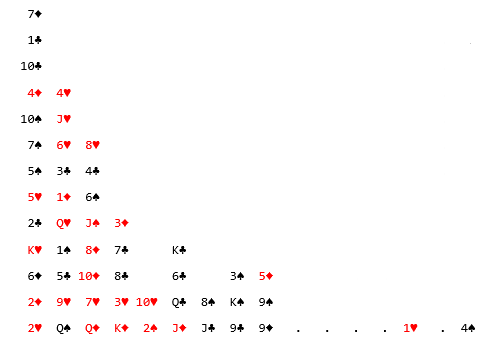
Exponential decay, the card games
Have you ever been to a Maths discovery centre? If so you may have seen a game where you throw a bucket of cubes. The faces of each cube have one of two colours. After a throw of the bucket you remove the cubes whose topside is a particular colour and form a column. Continue throwing the contents of the bucket until it is empty. Depending on how many faces of the cube have a particular colour then, on average, at each throw 1/6, 1/3, 1/2, 2/3 or 5/6 of the cubes are removed. i.e. Exponential decay.
Sometimes the game is played with coins and then either the heads or tails are removed. Here a slightly different game will be played with cards.
- Take two packs of 52 cards
- Spread one pack out face up on the table
To form a column
- Take the other pack, shuffle and deal thirteen cards
- Take the corresponding cards from the spread and use them to form a column
Repeat until all the spread out cards have been moved to a column. On average 1/4 of the remaining cards are used to form a column. Unlike the cube or coin games the first column always contains the exact proportion of the cards. This is because the cards are drawn from the Hypergeometric distribution whereas the other games use the Binomial distribution. The same average behaviour but different distribution underlines the issue with selecting the correct distribution when performing significance testing.
Alternatively, if you really want the Binomial distribution and don't mind the mess, you can always throw a pack of cards in the air and remove those which either landed face up or face down. i.e. 52 card pick up, ..., no card pickup.